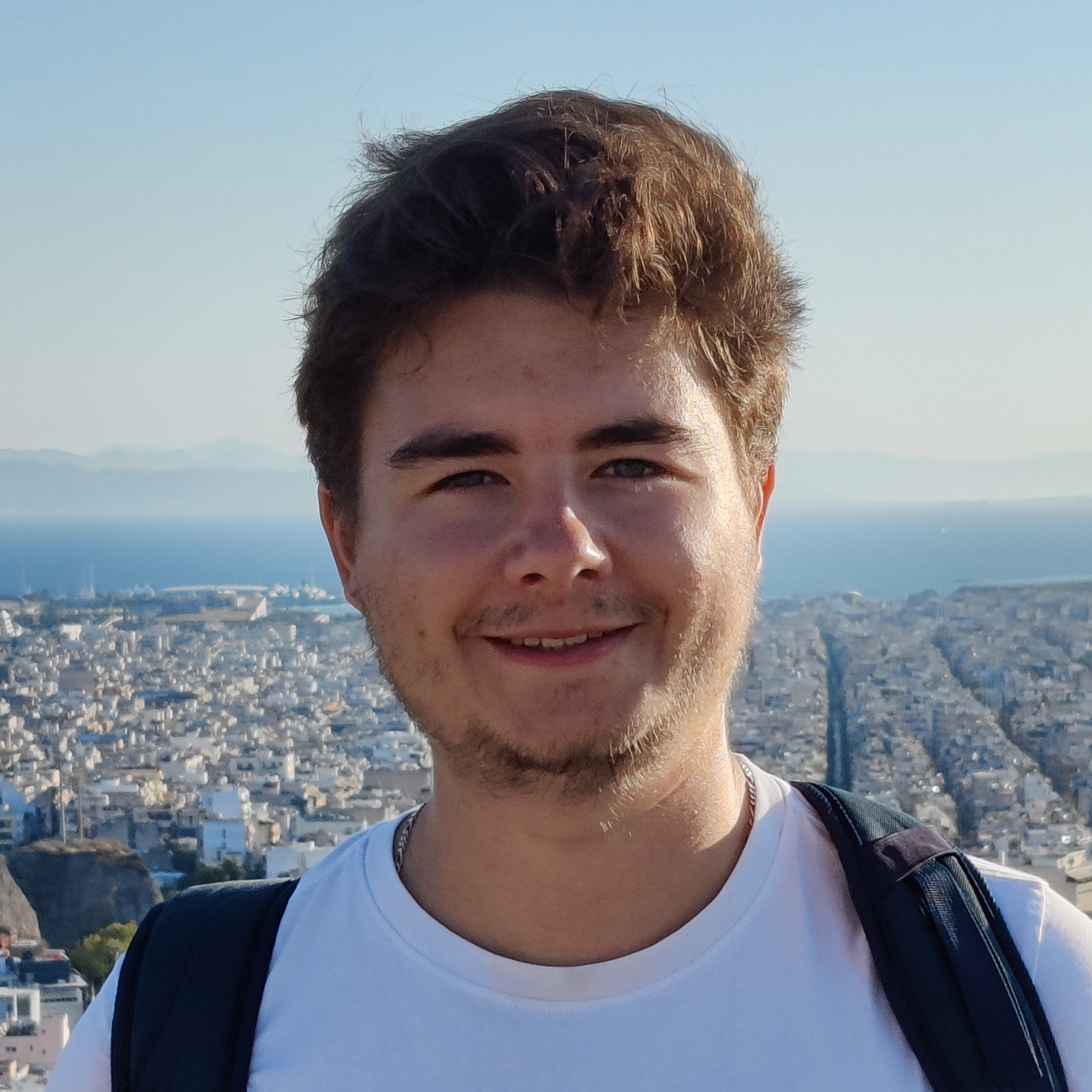Maxime Vaidis is currently a Ph.D candidate in Norlab laboratory. He got a formation in mathematics and physics of two years in the preparatory classes for the Grandes Ecoles at Faidherbe (Lille, France) as well as two Master’s degrees, one in electrical Engineering from UQAC (University of Quebec At Chicoutimi, Canada), and an other one in Telecommunication and computer Engineering from Telecom Saint Etienne (University of Jean Monnet-Saint-Etienne, France). He did an internship at UQAC in LAIMI laboratory (Automatic and 3D Multimodal Intelligent Interaction Laboratory), during which he participated in the develoment of a smart insole and a creation of a new type of robot’s swarm and his interaction which a human operator. He also worked for ConformiT compagny through a research contrat to develop a new accident-prevention system working with some Deep learning. His current works are about using several robotic total stations to obtain the six degrees of freedom of a robotic platform.
Education
- Master’s degree in electrical Engineering at UQAC (University of Quebec At Chicoutimi, Canada), 2016-2018
- Master’s degree in Telecommunication and computer Engineering from Telecom Saint Etienne (University of Jean Monnet-Saint-Etienne, France), 2014-2018
- Preparatory classes for the Grandes Ecoles in Mathematics and Physics at Faidherbe (Lille, France), 2012-2014
Projects involved
- Project RTS (main work)
- DARPA competitions (Urban and Final challenges respectively in 2020 and 2021)
- Project Scutigera
- Project SNOW
Publications
Journal Articles
- Rouček, T., Pecka, M., Čížek, P., Petříček, T., Bayer, J., Šalanský, V., Azayev, T., Heřt, D., Petrlík, M., Báča, T., Spurný, V., Krátký, V., Petráček, P., Baril, D., Vaidis, M., Kubelka, V., Pomerleau, F., Faigl, J., Zimmermann, K., … Krajník, T. (2022). System for multi-robotic exploration of underground environments CTU-CRAS-NORLAB in the DARPA Subterranean Challenge. Field Robotics, 2(1), 1779–1818. https://doi.org/10.55417/fr.2022055
Publisher Bibtex source - Baril, D., Deschênes, S.-P., Gamache, O., Vaidis, M., LaRocque, D., Laconte, J., Kubelka, V., Giguère, P., & Pomerleau, F. (2022). Kilometer-scale autonomous navigation in subarctic forests: challenges and lessons learned. Field Robotics, 2(1), 1628–1660. https://doi.org/10.55417/fr.2022050
PDF Publisher Bibtex source - Chahine, G., Vaidis, M., Pomerleau, F., & Pradalier, C. (2021). Mapping in unstructured natural environment: A sensor fusion framework for wearable sensor suites. SN Applied Sciences, 3(5).
Bibtex source
Conference Articles
- Gamache, O., Fortin, J.-M., Boxan, M., Vaidis, M., Pomerleau, F., & Giguère, P. (2024). Exposing the Unseen: Exposure Time Emulation for Offline Benchmarking of Vision Algorithms. IEEE/RSJ International Conference on Intelligent Robots and Systems (IROS), 11110–11117. https://doi.org/10.1109/IROS58592.2024.10803057
Publisher Bibtex source - Vaidis, M., Shahraji, M. H., Daum, E., Dubois, W., Giguère, P., & Pomerleau, F. (2024). RTS-GT: Robotic Total Stations Ground Truthing dataset. Proceedings of the IEEE International Conference on Robotics and Automation (ICRA). https://arxiv.org/abs/2309.11935
Publisher Bibtex source - Vaidis, M., Dubois, W., Daum, E., LaRocque, D., & Pomerleau, F. (2023). Uncertainty analysis for accurate reference trajectories with robotic total stations. Proceedings of the IEEE International Conference on Intelligent Robots and Systems (IROS). https://ieeexplore.ieee.org/abstract/document/10341529 Accepted for oral presentation
Publisher Bibtex source - Vaidis, M., Dubois, W., Guénette, A., Laconte, J., Kubelka, V., & Pomerleau, F. (2023). Extrinsic calibration for highly accurate trajectories reconstruction. Proceedings of the IEEE International Conference on Robotics and Automation (ICRA). https://arxiv.org/abs/2210.01048
Publisher Bibtex source - Kubelka, V., Vaidis, M., & Pomerleau, F. (2022). Gravity-constrained point cloud registration. Proceedings of the IEEE International Conference on Intelligent Robots and Systems (IROS), 4873–4879. https://doi.org/10.1109/IROS47612.2022.9981916
Publisher Bibtex source - Vaidis, M., Giguère, P., Pomerleau, F., & Kubelka, V. (2021). Accurate outdoor ground truth based on total stations. 2021 18th Conference on Robots and Vision (CRV). https://arxiv.org/abs/2104.14396
PDF Publisher Bibtex source - Baril, D., Grondin, V., Deschenes, S., Laconte, J., Vaidis, M., Kubelka, V., Gallant, A., Giguere, P., & Pomerleau, F. (2020). Evaluation of Skid-Steering Kinematic Models for Subarctic Environments. 2020 17th Conference on Computer and Robot Vision (CRV), 198–205. https://doi.org/10.1109/CRV50864.2020.00034 Best Robotic Vision Paper Award!
PDF Publisher Bibtex source
Theses
- Vaidis, M. (2024). Generation of six-degrees-of-freedom control trajectories using three robotic total stations for mobile robotics [PhD thesis, Université Laval]. https://corpus.ulaval.ca/entities/publication/3d84ad6f-a865-4ac5-8b97-c70549dc81a2
Publisher Bibtex source
Miscellaneous
- Daum, E., Vaidis, M., & Pomerleau, F. (2023). Benchmarking ground truth trajectories with robotic total stations. In presented at IROS23, Workshop on Methods for Objective Comparison of Results in Intelligent Robotics Research. https://arxiv.org/abs/2309.05134 Best paper award!
Publisher Bibtex source - Vaidis, M., Dubois, W., Guénette, A., Laconte, J., Kubelka, V., & Pomerleau, F. (2023). Extrinsic calibration for highly accurate trajectories reconstruction. Colloque REPARTI, Université Laval.
Bibtex source - Vaidis, M., Laconte, J., Kubelka, V., & Pomerleau, F. (2020). Improving the Iterative Closest Point Algorithm using Lie Algebra. In IROS 2020 Workshop - Bringing geometric methods to robot learning, optimization and control. https://doi.org/10.1109/CRV52889.2021.00012
Bibtex source
